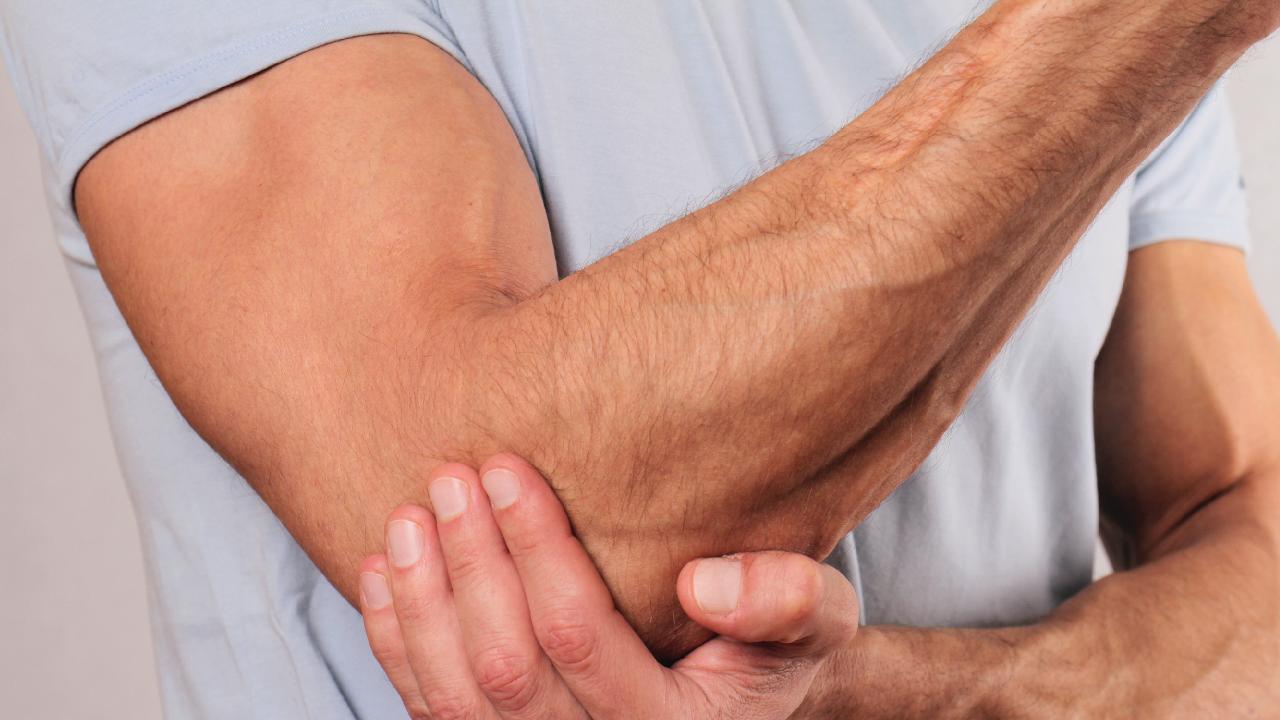In Clinical
Follow this topic
Bookmark
Record learning outcomes
Problem representation
A middle-aged man in otherwise good health and not on any medication for long-term illness presents with chronic worsening elbow pain.
Hypothesis generation
Elbow pain may be due to disorders involving the joint itself, the surrounding soft tissue structures, or a referred source. It usually occurs as a result of trauma through overuse or injury, and involves tears of tendons and ligaments or inflammation of bursae. Common sources of pain include the epicondyles and their tendon attachments (medial and lateral), the olecranon bursa, and the radial, median and ulnar nerves. Community pharmacists are most likely to see three elbow problems, with tennis elbow being by far the most common presentation.
Likely diagnosis
• Golfer’s elbow (medial epicondylitis)
• Student’s elbow (olecranon bursitis)
• Tennis elbow (lateral epicondylitis).
Continued information gathering
To differentiate between these common causes of elbow pain, it is important to determine the exact location of the pain, as the three common causes present with pain at different aspects of the elbow. For golfer’s elbow pain is experienced at the inner elbow; student’s elbow sees pain at the back of the elbow; and tennis elbow shows pain experienced on the outer aspect of the elbow. Andrew says the pain is on the outside of his elbow, which suggests you are dealing with tennis elbow.
Problem refinement
You can now look at other findings to support this tentative differential diagnosis. Ask questions such as:
• Is the pain experienced elsewhere?
• Are there other associated symptoms?
• Does anything make the pain better or worse?
Andrew is unable to tell you anything about how the pain started and is unaware if anything makes the problem worse. He says there is no radiation of pain or any numbness in his hand. These findings are, on the whole, not too helpful but do provide further evidence that golfer’s elbow (lack of numbness) is not the cause. At this point, you still feel the pain is probably due to tennis elbow.
A physical examination should show swelling if Andrew has student’s elbow. If competent to do so, the Cozen’s test (a provocation test) could be performed. This will reproduce symptoms of tennis elbow.
No visible signs of swelling are seen on inspection of the elbow. You do not perform any diagnostic tests as you have not received training on how to do them. Given the insidious progression of his symptoms, the location of the pain and absence of other symptoms, you are relatively confident Andrew has tennis elbow.
Red flags
Tumours involving the elbow are rare and present with persistent unexplained pain at rest associated with a mass or swelling. Andrew does not exhibit these symptoms.
Management
The aim of treatment is to provide symptom relief and restore physical function of the elbow.
Self-care options
Patients should be advised to continue to perform normal activities but to rest the arm where possible and avoid activities that precipitate symptoms for at least six weeks.
Prescribing options
Although Andrew has been taking paracetamol, topical NSAIDs form the mainstay of treatment. Corticosteroid injections from the GP may provide short-term relief but should not be routinely recommended.
Safety-netting
You tell Andrew you believe he has tennis elbow and although this is generally a self-limiting condition, it can take many months to resolve. Changing from paracetamol to topical ibuprofen might provide better pain relief but if he does try this, he needs to give it at least six weeks. If symptoms continue to worsen, or there is no improvement, he might benefit from physiotherapy.
By Professor Paul Rutter from the University of Portsmouth


